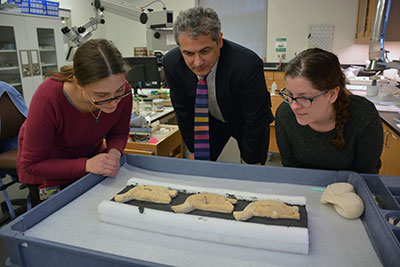Dear Friends,

This issue of Expedition celebrates the opening of the Penn Museum’s new Middle East Galleries. These Galleries trace a story that is vital not only to who we are as human beings but also to the Penn Museum’s own history.
Over millennia, we as humans have gone through a number of fundamental revolutions. Of these, the transition from forager to farmer was probably the most dramatic and far-reaching in human history. This is the transformation that the Middle East Galleries explore— the story of how ancient peoples changed their way of life thousands of years ago to stay in the same place year-round.
This led to the formation of the world’s first cities in ancient Mesopotamia, dramatically speeding up innovation and also introducing many of the issues of urban life that we continue to address today. Indeed, this chapter of our story is essential to understanding how we became city dwellers, particularly relevant as more and more people come to live in cities each year.
Our telling of this particular human transformation is, really, inextricable from the story of the Penn Museum. Our Museum began with excavations at Nippur, Iraq, in 1889, and went on to excavate dozens of sites in the region. These excavations will be showcased throughout the Middle East Galleries to highlight what, and how, we learn from archaeological investigation. The Galleries represent both the Museum’s long history of excavations in the Middle East and our ongoing research, which will be included in an updated display as new details of the “journey to the city” emerge.
The Middle East Galleries mark important firsts for the Museum: they are our first permanent galleries built to international standards, setting the stage for new signature galleries to come. They are also the first to be designed with multiple audiences in mind—by working closely with the Museum’s Learning Programs Department in the planning of the Galleries, we have created a really wonderful classroom for the Museum. After all, the Middle East Galleries—and all our galleries—are the public performance of our research, and they should engage all of our audiences.
The Middle East Galleries embody an exceptional breadth of expertise and of dedication from the Museum staff and external colleagues who together created a magnificent telling of this key chapter in the human story. The story told in these Galleries is the story of all of us. I hope that you will enjoy exploring it.
Warm regards,

Julian Siggers, PH.D.
Williams Director
